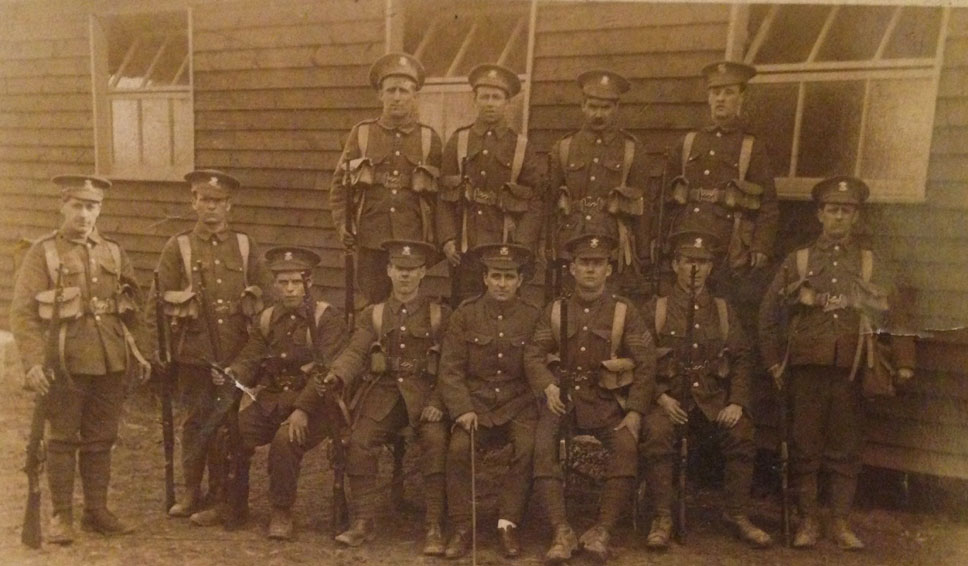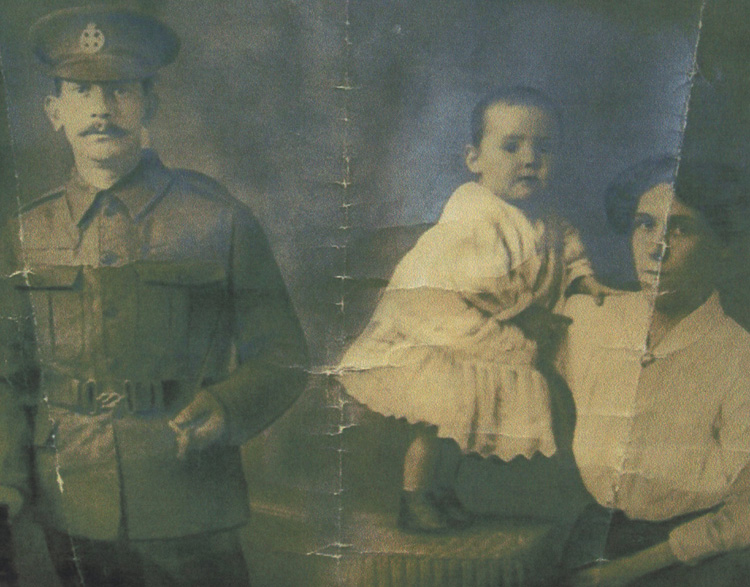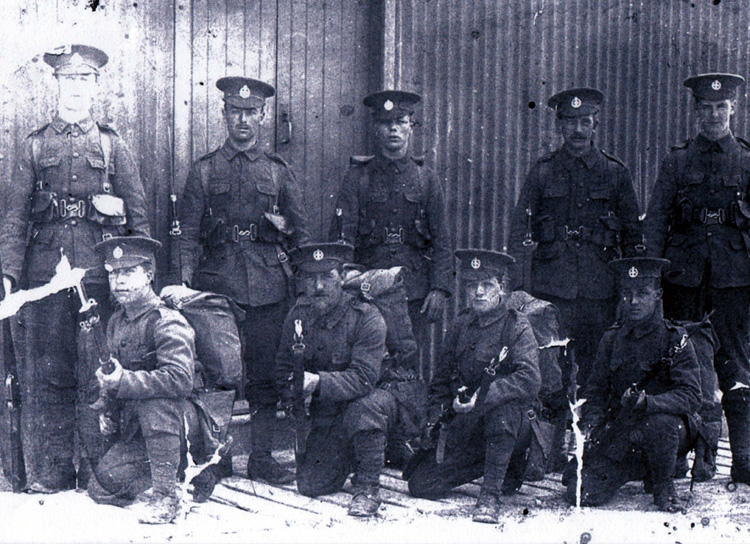

Stories of Grangetown men who fought and died

Here are just some examples of the stories we will tell - the lives behind the names on the memorial:
DIED
AT SEA The stories of Elmer Darrock who ended up being buried in
the United States and John Cleal, who postponed his wedding to fight in
a Naval battle.
HONOURED
BY THE FRENCH Diaries of life in the trenches help remember John
Henry Withers, who was killed shortly after he married.
THE SCHOOLBOY RUGBY STAR WHO FELL AT YPRES A few years after he played as a teenager for Wales George Harben died in Flanders. But his family suffered a second tragedy, which is not recorded on any memorial.
A WIDOW
FOR 50 YEARS Soldier John Melean died after the end of
the War but just before his wife reached hospital.
DIED AT
THE SOMME The family of Pte Tom Goodland, who died at Mametz
Wood two months before the end of the war, have been left some evocative photos
of him - and his medals. WALES
RUGBY INTERNATIONAL The story of Dai Westacott, who played for
Wales and Cardiff but was later injured in the Somme and killed at Ypres.
ONE OF
MANY CASUALTIES ON A TROOP SHIP Henry James died in 1917 on his
way to fight in Salonika when his ship was sunk by a U-boat.
THE SOLDIER ON MEMORIAL WHO LIVED TO TELL TALE The remarkable story of Sgt Alf Norman who survived the war but whose name ended up on the memorial.
 Two Grangetown boys who went to sea and didn't come home
Two Grangetown boys who went to sea and didn't come home
Our image of World War One is
usually of the trenches, but many Grangetown men served on merchant
ships or the Royal Navy, which came under threat from German submarines.
Our research so far has found two Grangetown casualties on ships
sunk by U-boats were barely out of school and were lost at sea within
a few days of each other in 1918.
John Stewart (pictured above) was 15 and the son of a widow,
who lived on Corporation Road. He left Court Road School and went
to work on the Windsor slipway, before becoming an assistant cook
on the SS Ventmoor. On only his second voyage on the cargo steamer,
as it sailed around the Greek Islands it was torpedoed on 14th February.
All 21 on board lost their lives. He was the son of Mary Ann Stewart
(nee Hurlow) and the late James Hutton Stewart (b Perth, 1872).
Even younger was Arthur Leonard Brown, just 14 and a mess room steward
on a cargo vessel carrying iron ore. He was the son of William and
Emma Brown of 2 Bedwas Street. The family had lived in Roath earlier.
On the 4th February when on route from Algiers for Barrow, his ship
the SS Treveal was torpedoed and sunk when off the Skerries, Anglesey.
He was among 33 who lost their lives.
Are you related to either of these boys? We'd like to hear from
you if you have any stories to tell.
Survived pit disaster but died in France a year later
 It was Britain's worst colliery disaster,
but George Herbert Rees survived the explosion at Senghenydd's Universal colliery which killed 439 miners.
It was Britain's worst colliery disaster,
but George Herbert Rees survived the explosion at Senghenydd's Universal colliery which killed 439 miners.
The tragedy happened on 14th October
1913 - but incredibly, one year later to the very day, Rifleman Rees died of wounds
while serving in France.
He was born Grangetown, son of the late Thomas and Ann Rees in 1883 - believed
to be at 20 Redlaver Street. The family later lived in Field Street, Trelewis
and he is also remembered on the memorial there. George's residence on enlisting
with the Rifle Brigade 3rd Battalion was in Ely, Cardiff. He died of wounds
sustained during the first Battle of Aisne on 14th October 1914, aged 32, and
is buried in France.
The Grangetown woman who died at the front
So far, our research has uncovered one Grangetown woman who was also recorded as dying on active service and was one of the last to be buried in a war cemetery at the end of July 1920 in France.
Kate was the eldest of six daughters born to John Miller,
a Russian-born gasworks worker and Irish mother Elizabeth and living at 27 North
Clive Street, Grangetown, Cardiff. In 1911, Kate was an under-foreman at the
nearby Freeman's cigar factory before joining up.
Her obituary in the Cardiff Times says she died on July 29th "tragically
sudden after pleuro pneumonia." She was expecting to be demobbed shortly before
she was taken ill. She was the last to be buried from World War I in St Pol-sur-Ternoise
cemetery and was given a service number to be included, as a worker, in the
Commonwealth Graves Commission list. She is however one of more than 60 people from Grangetown who died but who were not included on the memorial.
Are you one of the Millers' descendants and have any stories to tell? Anna Catherine Miller, known as Kate, was 27 when she died and had been at
the front for nearly four years serving with the Queen Mary's Army Auxiliary
Corps. The corps worked as cooks and waitresses, among other duties, and three
of her younger sisters - believed to be Eveline (b 1896) and twin sisters Irene
and Edith (b1898) - were also serving.
Anna Catherine Miller, known as Kate, was 27 when she died and had been at
the front for nearly four years serving with the Queen Mary's Army Auxiliary
Corps. The corps worked as cooks and waitresses, among other duties, and three
of her younger sisters - believed to be Eveline (b 1896) and twin sisters Irene
and Edith (b1898) - were also serving.
Docksman who left a wife and young daughter

Joseph, with a photo alongside of his wife and daughter
Rifleman Joseph Taylor was born at 2 Oakley Street
in Grangetown in September 1886, the youngest and last child born to Eliza Taylor,
who was in her 40s. He had five brothers and two sisters, the eldest Emily was
already 26 when he was born.
The family had moved from Gloucestershire and moved again to Barry in March 1901. At 14, Joseph worked as a baker's assistant while his father John and brothers worked in the docks.
Joseph was living back in Grangetown, in Clive Street, and working as a docks labourer by the time he got married in May 1913 at St Paul's. His bride Edie, who had also been brought up near the Taylors in Oakley Street, was living with her widowed mother at 25 Warwick Street. Her father had died of TB when she was eight. This is where Joseph and Edie's daughter Violet Elizabeth Taylor was born on 1 February 1914.
When war broke out, Joseph enlisted in Barry. He died in Belgium in February
1916, aged 29.while serving with the Rifle Brigade, a few days after Violet's
second birthday.
Thanks to Michael Brown, Joseph's grandson
Joseph is pictured second from the right, standing